- Firstly, I took my 1 year old son with me to the park on his tricycle - this meant that not only did I have to constantly worry about his welfare whilst I was taking photos but I also couldn't move off the paved paths to look for better shots. I can't have this distraction with me while I am searching for shots for this course.
- Secondly, the project called for a shot at standard focal length (approx 50mm @ 35mm equivalent). The zoom lens on my camera has no markings for focal length (in fact it doesn't move in and out at all) and the only indication of focal length is a visual "zoom scale" in the viewfinder. As a result I tried to find standard focal length by comparing the image in the viewfinder with the image looking directly at the scene (as standard focal length was explained in the course notes as the focal length at which the view in the viewfinder is the same size as that looking directly at the scene). The result was a picture taken at a focal length of 117mm (35mm equivalent)! Clearly the viewfinder of my camera (which is a small lcd display) has the effect of reducing the size of the image resulting in my zooming in too far to compensate. The problem is further complicated by the fact that although the focal length is recorded in the image's Exif Metadata, this can only be viewed once the image is transferred to a PC and not on the camera itself. As a result I have subsequently taken a few more test shots around the house and can now fairly consistently judge approximate standard focal length just using the cameras digital "zoom scale".
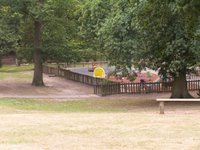 This was my first attempt at
This was my first attempt at"standard focal length" at Licky
Hills Country Park. In fact the
35mm equivalent focal length
is 117mm!
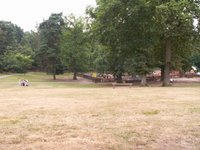
This photo was taken at
my camera's widest
angle of 35mm (35mm
equivalent)...
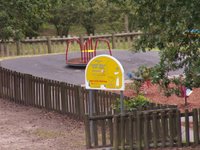
...and this photo was taken
at my camera's furthest
telephoto setting of 420mm
(35mm equivalent).
I will now repeat the exercise, learning from the above points, before printing the images to continue with the next part of the project.
Monday 31st July 2006
On Saturday I visited Cannon Hill Park and in the avenue of trees that runs down the side of Birmingham Nature Centre I retook the images for this project focussing on the Scout's War Memorial. These pictures were printed at A4 size and I returned to the location today to compare them to the actual scene.
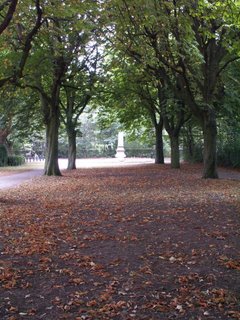
This image was taken with a focal length of 47mm (i.e. standard focal length). In order for the A4 print to appear the same size as the actual scene I had to hold it approximately 20cm from my eyes (i.e. comfortable reading distance).
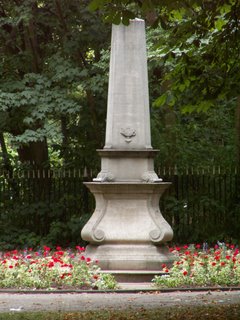
This image was taken at my camera's full zoom (focal length of 420mm). I was unable to hold this photo far enough away from me to make it appear the same size as the scene.

This image was taken at my camera's widest angle (35mm focal length). The A4 size print needed to be held just 5cm from my eyes in order to appear the same size as the actual scene.
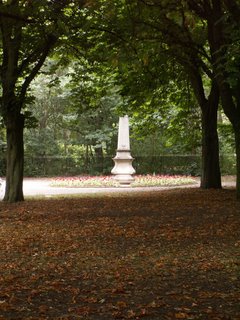
Because I predicted that the photo at full zoom (above) would be unable to be compared to the size of the actual scene, I also took a photo at a mid-zoom focal length (109mm). The A4 image had to be held at arm length in order to appear the same size as the scene.

No comments:
Post a Comment